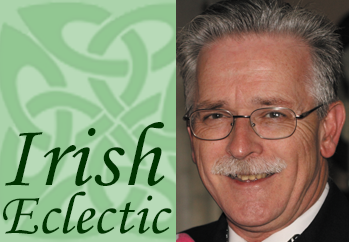Know Something? Know Nothing! Nativism, Then and Now
Opinion Advocates for ideas and draws conclusions based on the author/producer’s interpretation of facts and data.
 By Brian McGowan
By Brian McGowan
Today’s heated discussion about immigrant hordes swamping our pristine shores should surprise no one. In a case of history repeating itself, the debate today closely echoes efforts during the 1800s to counter perceived threats to America’s future.
The bullseye today is on Hispanics fleeing poverty, gang violence and the breakdown of the rule of law in their native lands; Middle Easterners, largely Muslim, fleeing terrorism and political turmoil; and Chinese, fleeing a repressive government and economic uncertainty.
The drivers are the same, now as then. The target groups, however, are not.
It was 1855 when the population of New York City changed from predominantly White, Anglo-Saxon and Protestant, to one where immigrants outnumbered the native-born. Two-thirds of that majority hailed from Ireland, their numbers swollen by the Great Hunger and its aftermath. One-quarter hailed from Germany. Both groups met a cold reception, and often downright violence, at the hands of various “nativist” groups who decried the dilution these immigrants were having on America’s values, traditions and racial purity.
The Irish in New York particularly rankled the nativists. Settling in Manhattan neighborhoods like the Five Points and Hell’s Kitchen, the Irish traded rural for urban living, with all its squalor. There, in some of the worst slums of the world, they quickly found themselves at odds with a nativist American movement whose power and influence extended to the highest offices in the land.
Senior American statesmen were eager to keep in their good graces. The most prominent of these groups were called “The Know Nothings.” Highly secretive, they would respond to any outsider’s inquiry about their activities with a terse: “I know nothing.” They resorted to bullying, boycotting, violent intimidation and outright murder to keep immigrants in their places, especially the Irish, whom they viewed as indigent and uneducated.
The Irish “flooding America’s shores” were predominantly Roman Catholic, which raised the specter of “Rome Rule.” This fear remained vibrant as late as the 1960s, when America elected its first Roman Catholic President (John F. Kennedy).
The 1850s and beyond was the era of “No Irish Need Apply,” a nativist ploy my own grandfather, an 1890 immigrant, struggled against as he sought his first foothold here. Newspaper ads soliciting workers often hid the ban by using only the acronym “NINA.”
Interestingly, the objection to the Irish applied more to men than to women, and it was further designed to limit political rights than to prevent men from entering the country. Domestic workers were in great demand, and Irish girls and women were eager to fill positions as maids, cooks and laundresses. Besides, they couldn’t vote anyway! No woman could, until 1919.
For their brothers, sons and husbands, there were plenty of menial jobs that needed to be filled at the absolute lowest rung of the economic ladder.
“Let the Irish fill them!” ran the argument. “But don’t give them the vote!”
To accomplish that goal, the Know Nothings did their best to change the five-year requirement for citizenship to 21 years, a move that ultimately failed.
While the Know Nothings as a viable political movement died out in the latter half of the 19th century, their adverse impact on America’s welcome lingered on, and arguably may still be felt. The Chinese Exclusion Act of 1882 was the first national law restricting immigration. The Johnson-Reed Act of 1924 made it significantly more difficult for Southern and Eastern Europeans to come to this country.
And our treatment of our own African American population, stymied by the post-Reconstruction era introduction of Jim Crow laws, effectively disenfranchised hundreds of thousands of Americans who had roots in this country every bit as deep, if not more so, than any descendants of Europeans.
What are the words of Emma Lazarus’s epic poem, “The New Colossus,” encased at the base of our nation’s greatest symbol, the Statue of Liberty? Says she: “Send these, the homeless, tempest-toss to me, I lift my lamp beside the golden door!”
Longtime Pleasantville resident Brian McGowan was born and raised in the Bronx, and is a second-, third- and fifth-generation Irish-American/Canadian, as his immigrant ancestors followed several paths to the New World. Reach him at brian.m.mcgowan1952@gmail.com. He is the author of three books: “Thunder at Noon,” about the Battle of Waterloo; “Love, Son John,” about World War II; and “Island Prize,” about the Revolutionary War in 1776 New York. All are available at Amazon.com.

Examiner Media – Keeping you informed with professionally-reported local news, features, and sports coverage.
